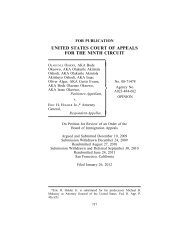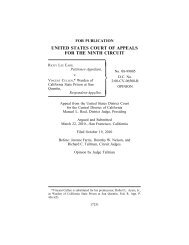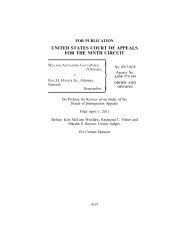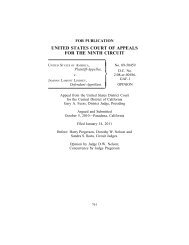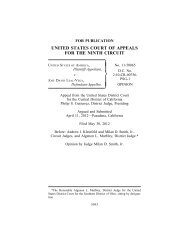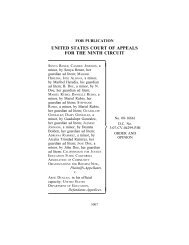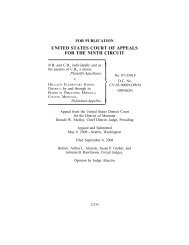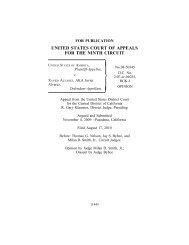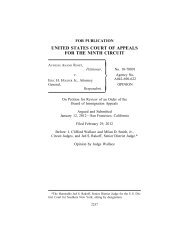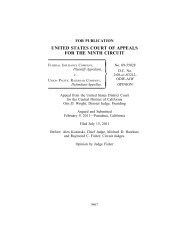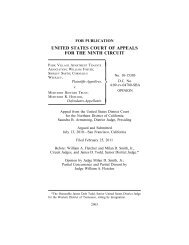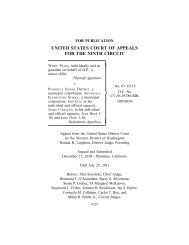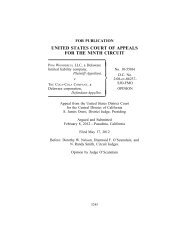kristin rossum v. deborah patrick - Ninth Circuit Court of Appeals
kristin rossum v. deborah patrick - Ninth Circuit Court of Appeals
kristin rossum v. deborah patrick - Ninth Circuit Court of Appeals
You also want an ePaper? Increase the reach of your titles
YUMPU automatically turns print PDFs into web optimized ePapers that Google loves.
17406 ROSSUM v. PATRICK<br />
[C]ontamination <strong>of</strong> the specimens would explain the<br />
high blood levels better than ingestion or other<br />
administration <strong>of</strong> fentanyl to the decedent. . . . [I]n<br />
attempting to determine if the cause <strong>of</strong> death was<br />
from fentanyl, it would be necessary to rule out the<br />
possibility that the samples were contaminated.<br />
Richeimer Decl. at 3.<br />
Dr. Richeimer further noted that a toxicology lab could<br />
conclusively resolve the contamination issue by testing his<br />
samples for metabolites <strong>of</strong> fentanyl. If de Villers’s specimens<br />
contain metabolites <strong>of</strong> fentanyl, then fentanyl must have been<br />
present in his body at the time the specimens were taken. If<br />
no metabolites are present, then the specimens must have<br />
been contaminated after his death.<br />
The California Supreme <strong>Court</strong> summarily denied Rossum’s<br />
habeas petition in a one-sentence order on August 8, 2007.<br />
Two days later, Rossum filed a federal habeas petition under<br />
28 U.S.C. § 2254. The district court adopted the recommendation<br />
<strong>of</strong> the magistrate judge and denied Rossum’s petition. It<br />
also denied Rossum’s motion, made under Rule 6 <strong>of</strong> the Rules<br />
Governing Section 2254 Cases, for leave to test de Villers’s<br />
autopsy specimens for metabolites <strong>of</strong> fentanyl.<br />
DISCUSSION<br />
I. Governing Legal Standards<br />
Review <strong>of</strong> the instant petition is framed by Antiterrorism<br />
and Effective Death Penalty Act <strong>of</strong> 1996 (“AEDPA”), 28<br />
U.S.C. § 2254(d), and upon rehearing, by the Supreme<br />
<strong>Court</strong>’s recent decisions in Richter and Pinholster.<br />
A. Richter<br />
Under AEDPA, the district court could not grant Rossum’s<br />
habeas relief unless the California Supreme <strong>Court</strong>’s decision



